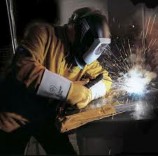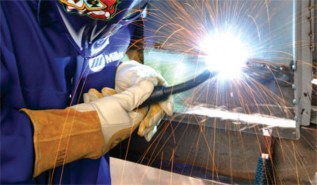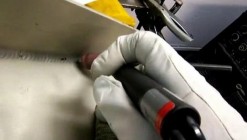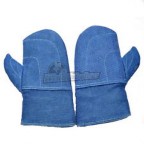“ I guess the question I’m asked the most often is: “When you were sitting in that capsule listening to the count-down, how did you feel?” Well, the answer to that one is easy. I felt exactly how you would feel if you were getting ready to launch and knew you were sitting on top of two million parts — all built by the lowest bidder on a government contract.”
(John Glenn piloted the Mercury-Atlas 6 “Friendship 7” spacecraft on the first manned orbital mission of the United States)
Welding gloves; anybody who’s involved with them, from the maker to the buyer to the actual user, has an opinion. The company, who’s providing the gloves, especially if there’s a lot, will be forming an opinion when they discover how much they spend annually on gloves. The manufacturers have an opinion: when the knives start cutting the leather, there’s no turning back. These will be the gloves he will be selling. Lastly, the person who’s wearing the gloves all day is developing an opinion, whether anyone’s listening or not.
Strong opinions lead to actions. Purchasing wants the best glove for the cheapest price. The manufacturer wants to produce the most popular glove that appeals both to the user and the buyer: which is like trying to find the end of the rainbow. If the end user likes his gloves, then he looks after them.
Welding gloves are designed according to the welding process: Stick, Mig and Tig welding being the most common processes. All processes want heat protection and dexterity but you can’t have both. You have to compromise.

Figure 1 STICK WELDING
Stick welding is a simpler process; it doesn’t have the same amount of dexterity as the other processes. But as the rod is being burnt up, your hand is getting closer to the arc. This becomes very noticeable with heavy stick welding. Hence, stick welding gloves have heavier padding on the back and in the fingers; decreasing dexterity (the fingers can be very well padded).

Figure 2 MIG WELDING
Mig welding needs more dexterity: pulling the trigger and manipulating the gun in different angles. You don’t want to be fighting with your glove. A welder, who has his gloves off, won’t be doing any welding.

Figure 3 TIG WELDING
The Tig welder, Mr. Expert, demands maximum dexterity: he needs to be feeling the small tig rod (sometimes as small as .035) with his gloves. He has to be able to pick it up, to roll it and to feed it into the weld puddle.
Gloves are sewn together. Good gloves use Kevlar: a heat resistant thread, stronger than nylon or polyester, and not easily stretched. Manufacturers are very good at pointing out when they’re using Kevlar and silent when they’re not.
Gloves have linings that can be either wool, cotton, cotton/foam or a manufacturer’s special patented lining (they need something to make their premium gloves better than their competitors).

Figure 4 HIGH HEAT MITTS
Gloves with a wool lining give the best heat protection. Wool is thicker and will restrict the hand to simple movements. This kind of lining is usually in gloves made for handling high heat, being more important than dexterity. Gloves lined with cloth give the most dexterity and moisture absorption. Foam/cotton gloves, use the foam for the back of the glove since that’s where most of the heat comes from. The cotton is on the palm to help give some hand movement. The other linings, the manufacturer’s own, are mostly to give better heat protection.

Figure 5 PREMIUM WELDING GLOVES
The exterior of the gloves is where costs are reduced or increased, all depending on what kind of leather is being used. Cowhide is the most common welding glove. The cowhide is split in 2 and the less expensive leather makes up the welding glove. Deerskin is very soft and gets used for TIG gloves; some motorcyclists have discovered these gloves are great for driving and so much cheaper. Pigskin is naturally resistant to moisture; these are great in wet and oily conditions. Goatskin has good tensile strength and stands up well against rubbing and scraping. Sheepskin, with its nice smooth surface and high dexterity, makes very nice TIG gloves. Other types of glove exteriors include elkskin and silicone.
Welding gloves come in different sizes. Stick welding gloves tend to be offered in one size: Large; sorry, ladies. While Tig welders need more choice. They don’t want liners in their gloves. They don’t want floppy thumbs and fingers. They want a nice comfortable fit.

Figure 6 THE DIME TEST
TIG welders like to test their gloves with the dime test: how well can you pick up a dime off the table.
Gloves come in many different price points. Some are priced to last a few days and others are priced to last several months. The life of a glove is dictated by its use and its desirability. Something that feels like stiff cardboard will be treated poorly – with the hope a nicer pair will be available.
Give us a call today and we can help you find welding gloves are right for you and your crew. We’d be glad to find that comfortable fit between price and practicality.
Cheers,
Ron-Son’s Torch